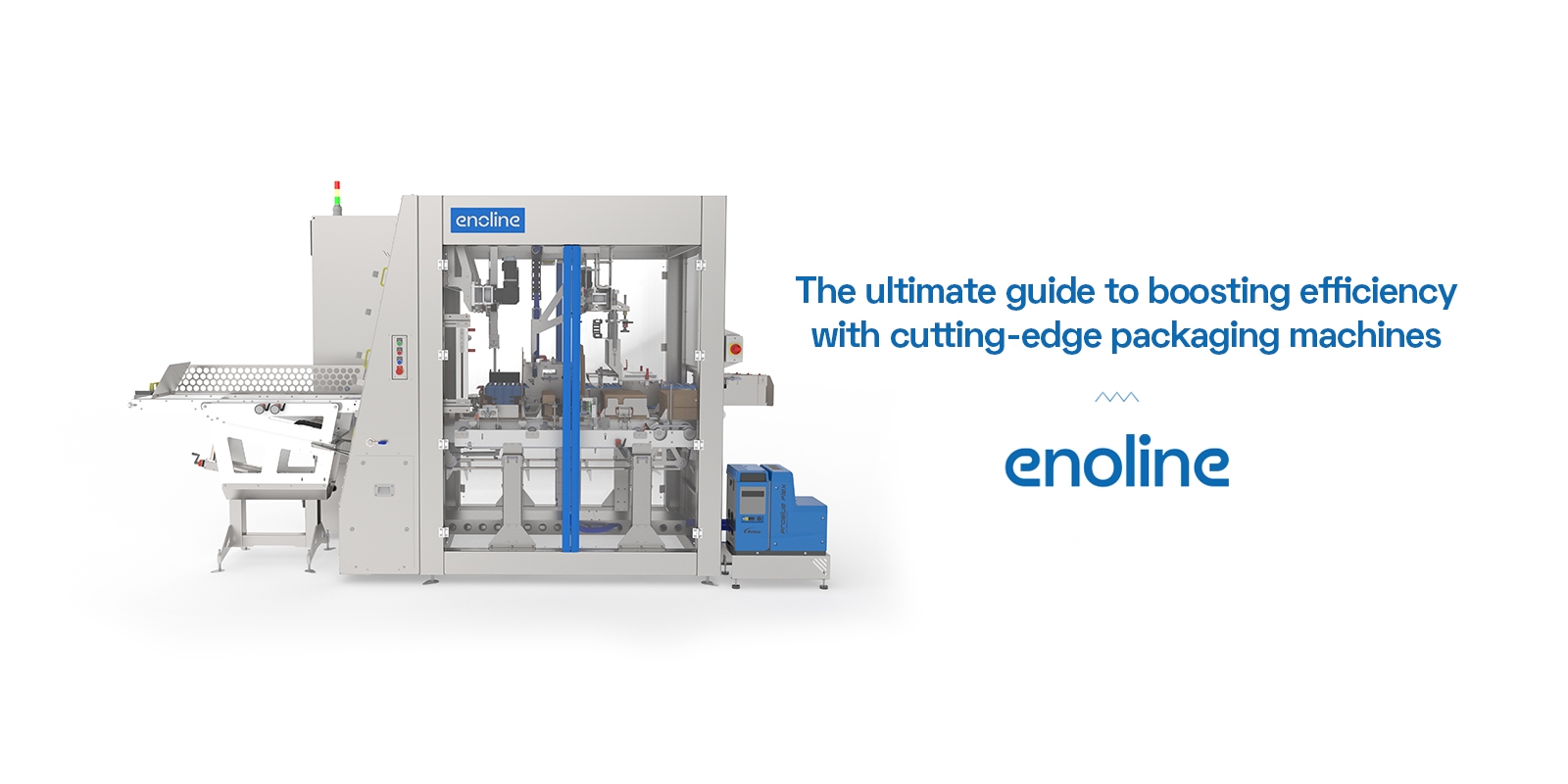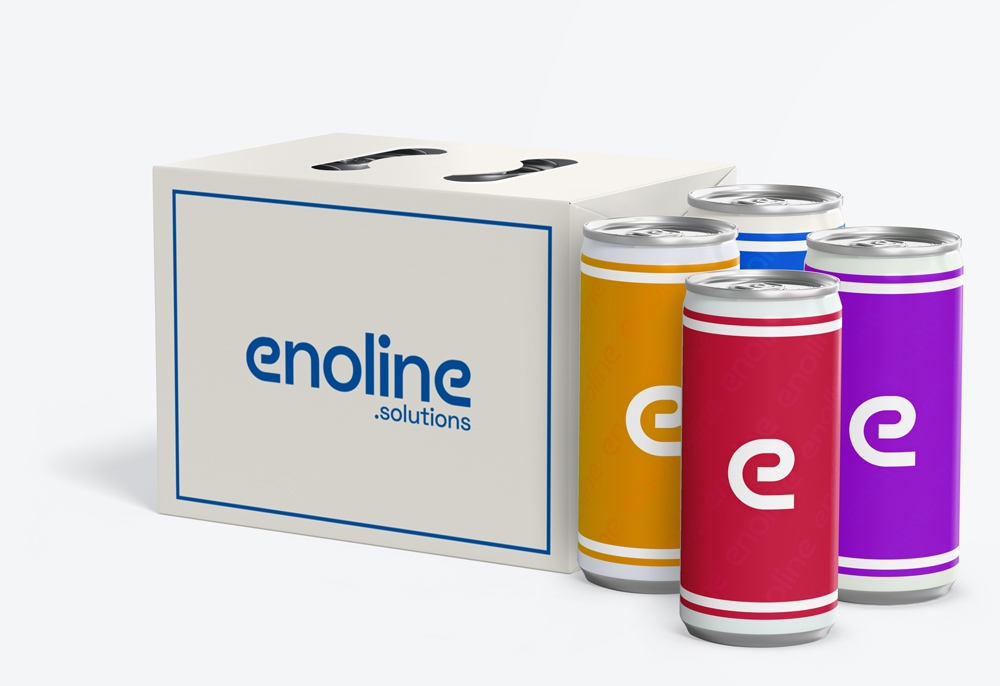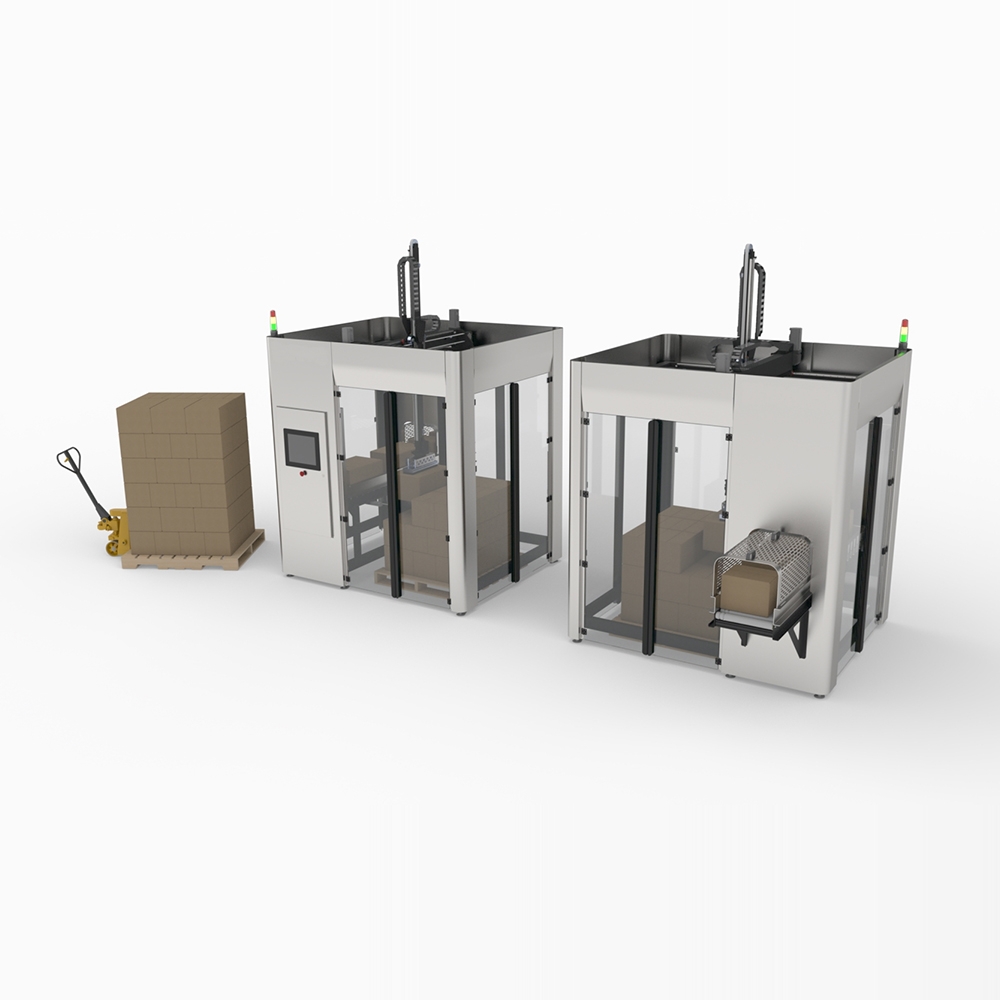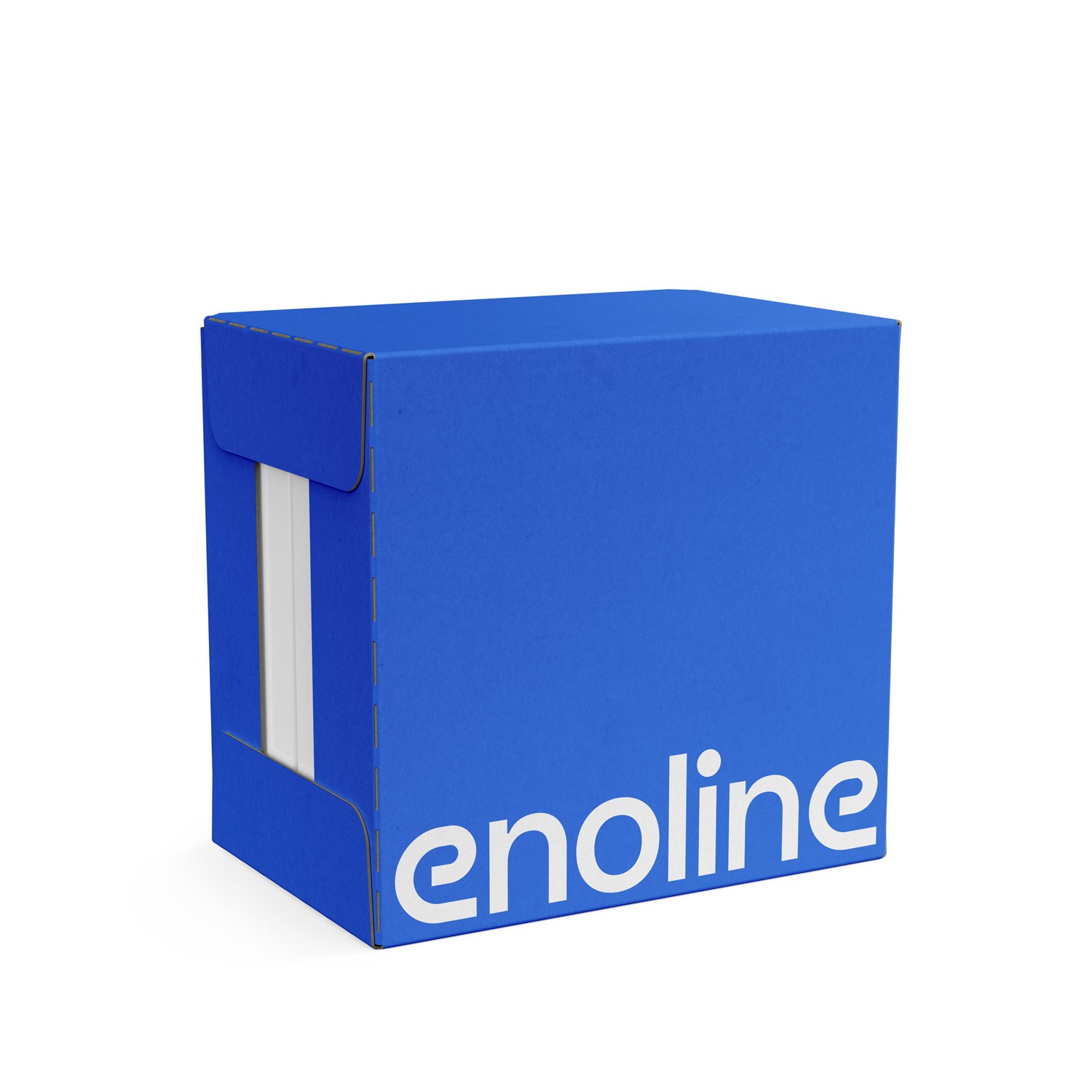February 11th
The ultimate guide to boosting efficiency with cutting-edge packaging machines

Looking to revolutionize your packaging process and skyrocket efficiency? Look no further than our comprehensive guide on leveraging cutting-edge packaging machines to streamline operations and maximize productivity. In today's fast-paced market, staying ahead means embracing innovative technology, and these top-of-the-line machines are here to elevate your packaging game like never before.
See our best caning solution
From automated filling and sealing to advanced labeling and quality control, these state-of-the-art solutions are designed to optimize every step of the packaging journey. Say goodbye to costly errors, labor-intensive processes, and wasted time – with the right packaging machine by your side, you can enhance accuracy, speed, and consistency to meet the demands of modern consumers.
Join us as we delve into the world of modern packaging technology and uncover the ultimate strategies for boosting your operational efficiency. Get ready to revolutionize your workflow and set your business on the path to success with the power of cutting-edge packaging machines.
Advantages of using advanced packaging machinery
The adoption of advanced packaging machinery brings a myriad of benefits that can significantly transform the operational dynamics of a business. One of the most pronounced advantages is the enhancement in efficiency. Advanced machines are designed to operate at higher speeds and with greater precision than their manual counterparts. This shift not only reduces the time taken to package products but also eliminates the likelihood of human error, ensuring that every package meets quality standards. As a result, businesses can handle larger volumes of output in shorter time frames, which is crucial in today's competitive market.
In addition to efficiency, advanced packaging machinery often leads to cost savings. While the initial investment might be substantial, the long-term financial benefits can be substantial. Automated machines reduce labor costs, as fewer employees are required to oversee packaging processes. They also minimize waste through more accurate filling and sealing processes, which can lead to savings in materials. Moreover, with enhanced durability and reliability, these machines typically require less frequent maintenance and repair, further contributing to reduced operational costs.
Sustainability is another critical advantage of utilizing advanced packaging machinery. Many contemporary machines are designed with eco-friendliness in mind, using less energy and materials compared to traditional packaging methods. For instance, some machines can work with biodegradable materials or optimize the use of packaging space to minimize waste. As consumers increasingly prioritize sustainability, businesses that adopt these technologies not only enhance their operational efficiency but also align themselves with the values of their customer base, positioning themselves as responsible and forward-thinking brands.
Latest trends in packaging technology
As the packaging industry continues to evolve, several notable trends are shaping the landscape of packaging technology. One of the most significant trends is the rise of smart packaging solutions. These innovative systems utilize IoT (Internet of Things) technology to monitor the condition of products during shipping and storage. For example, smart sensors can detect temperature fluctuations or humidity levels, ensuring that perishable items remain safe and fresh. This technology not only enhances product quality but also provides valuable data for supply chain management, allowing businesses to make informed decisions.
Another trend gaining momentum is sustainable packaging. With growing consumer awareness and demand for environmentally friendly practices, companies are increasingly investing in packaging machines that support sustainable materials and processes. This includes the use of recycled, biodegradable, or compostable materials, as well as machines designed to minimize waste. Additionally, advancements in printing technologies allow for better branding and information dissemination on eco-friendly packaging, further appealing to environmentally conscious consumers.
Finally, customization and personalization are becoming central to packaging strategies. Advanced machinery now allows for greater flexibility in packaging design, enabling businesses to create tailored solutions for specific markets or customer preferences. This trend is particularly evident in the food and beverage industry, where packaging can be customized for seasonal promotions or limited-edition products. By investing in machinery capable of rapid changeovers and diverse packaging formats, companies can cater to varied consumer needs and stand out in a crowded marketplace.
Factors to consider when choosing packaging machines
Selecting the right packaging machine involves careful consideration of several critical factors to ensure that it aligns with your business needs. First and foremost, you must evaluate the type of products you will be packaging. Different machines are designed for specific types of packaging materials, sizes, and shapes. For instance, a machine that excels at packaging liquids may not be suitable for solid products. Understanding your product specifications will guide you in choosing a machine that fits your requirements and minimizes operational inefficiencies.
Another essential factor is the production capacity. It is vital to assess both your current and future production needs to select equipment that can accommodate growth. A machine that meets your present output may not suffice if you anticipate increased demand. Consideration should be given to the speed at which the machine operates, as well as its ability to handle different packaging formats without extensive downtime for changeovers. Investing in a machine that can scale with your business will save you from future disruptions and additional costs.
Additionally, the level of automation and technological features offered by packaging machines is a crucial consideration. Fully automated systems can streamline operations and reduce labor costs, but they may also require a higher initial investment. Conversely, semi-automated machines may be more cost-effective but could necessitate more manual intervention. Evaluate your workforce capabilities and training requirements, as well as the machine's compatibility with existing systems, to ensure a seamless integration that boosts overall efficiency.
How to optimize packaging processes with innovative machinery
Optimizing packaging processes using innovative machinery involves a strategic approach to integrate technology into existing workflows. One effective method is to conduct a thorough analysis of your current packaging systems to identify bottlenecks and inefficiencies. By understanding where delays or errors occur, you can pinpoint the areas that would benefit most from automation. Whether it’s improving speed, accuracy, or consistency, leveraging advanced machinery can significantly reduce or eliminate these issues, ultimately enhancing overall productivity.
Another strategy is to implement modular packaging solutions that allow for flexibility and scalability. Many advanced packaging machines come equipped with interchangeable components that can be easily adjusted or upgraded as your production needs change. This adaptability means that you can respond more efficiently to market demands or seasonal fluctuations in production without the need for a complete overhaul of your packaging line. By investing in modular technology, businesses can maintain operational efficiency while adapting to evolving consumer preferences.
Moreover, it is crucial to invest in employee training and support to maximize the benefits of innovative machinery. Even the most advanced equipment can fall short if operators are not adequately trained to use it. Comprehensive training programs that cover machine operation, maintenance, and troubleshooting will empower your workforce to utilize the machinery effectively. Additionally, fostering a culture of continuous improvement where employees are encouraged to provide feedback and suggestions can lead to ongoing optimizations in packaging processes.
Maintenance and troubleshooting tips for packaging machines
Regular maintenance is essential to keep packaging machines running smoothly and efficiently. One of the best practices is to establish a routine maintenance schedule that includes daily, weekly, and monthly checks. Daily checks might involve inspecting the machine for any visible signs of wear or damage, ensuring that all safety features are functioning correctly, and cleaning the machine to prevent contamination. Weekly and monthly checks should include more in-depth inspections, such as lubricating moving parts, tightening bolts and screws, and replacing worn-out components before they cause operational issues.
In addition to routine maintenance, it’s vital to have a clear troubleshooting guide readily available for operators. This guide should outline common issues that may arise during operation, along with step-by-step instructions on how to address them. For instance, if a packaging machine is not sealing correctly, the troubleshooting guide can help identify whether the issue is due to temperature settings, material quality, or mechanical failure. Having this resource can significantly reduce downtime and ensure that operators can quickly resolve issues without having to wait for expert assistance.
Finally, fostering a proactive approach to maintenance can save businesses time and money. This includes training operators to recognize early warning signs of potential problems, such as unusual noises or decreased performance. Additionally, implementing a predictive maintenance strategy that utilizes data analytics can help anticipate equipment failures before they occur. By analyzing performance data and identifying patterns, companies can schedule maintenance during non-peak hours, minimizing disruptions and enhancing overall operational efficiency.
Top manufacturers of cutting-edge packaging machines
In the ever-evolving world of packaging technology, several manufacturers have distinguished themselves by producing cutting-edge machines that cater to diverse industries. One of the frontrunners is Bosch Packaging Technology, renowned for its innovative solutions that include automated packaging lines, cartoners, and pouch packaging systems. Their commitment to quality and efficiency makes them a preferred choice for many businesses looking to enhance their packaging processes. Bosch’s machines are designed to meet the high standards of hygiene and safety, particularly in food and pharmaceutical applications.
Another notable player is Krones AG, a global leader in beverage packaging technology. Krones specializes in developing complete packaging solutions, from bottling lines to labeling machines and palletizing systems. Their focus on sustainability and modularity allows businesses to tailor their packaging processes to specific needs while minimizing waste. Krones’ technology ensures that clients can achieve high output levels without compromising on quality, making them a trusted partner for many beverage manufacturers.
Finally, there is a growing presence of innovative startups in the packaging machinery sector, such as Packsize and EcoPack. These companies focus on creating smart, sustainable packaging solutions that cater to the needs of modern consumers. Packsize, for example, specializes in on-demand packaging systems that produce custom-sized boxes, reducing material waste and improving shipping efficiency. EcoPack emphasizes eco-friendly packaging solutions that not only meet consumer demands but also align with environmental goals. By exploring options from established manufacturers and emerging startups, businesses can find the right packaging solutions to meet their unique requirements.
EcoPack emphasizes eco-friendly packaging solutions
EcoPack emphasizes eco-friendly packaging solutions that not only meet consumer demands but also align with environmental goals. By exploring options from established manufacturers and emerging startups, businesses can find the right packaging solutions to meet their unique requirements. The demand for sustainable packaging solutions continues to grow as consumers become increasingly concerned about the environmental impact of packaging materials. EcoPack’s commitment to sustainability positions them as a leader in offering environmentally responsible alternatives to traditional packaging methods.
Training programs for operating advanced packaging equipment
As the complexity of packaging machinery increases, so does the need for comprehensive training programs for operators. Effective training ensures that employees are well-equipped to handle advanced equipment, leading to improved operational efficiency and reduced downtime. One effective approach is to implement a structured onboarding program for new employees, covering both theoretical knowledge and hands-on experience with the machines they will be operating. This program should include safety protocols, machine operation techniques, and troubleshooting methods to create a well-rounded understanding of the equipment.
In addition to initial training, ongoing education is crucial for maintaining a skilled workforce. Regular workshops and refresher courses can help operators stay updated on the latest technological advancements and best practices in packaging machinery. These sessions can also serve as opportunities for employees to share their experiences and suggest improvements, fostering a culture of continuous learning within the organization. By investing in ongoing training, businesses can enhance employee confidence and competence, ultimately leading to more efficient operations.
Furthermore, leveraging technology in training programs can enhance learning outcomes. Virtual reality (VR) and augmented reality (AR) tools can provide immersive training experiences that allow operators to practice in a controlled environment before working on actual machinery. These technologies can simulate various scenarios, enabling employees to develop problem-solving skills and improve their response to real-life challenges. By integrating innovative training methods, companies can ensure that their workforce is not only proficient in operating advanced packaging machines but also capable of adapting to future technological advancements.
Integration of automation in packaging solutions
The integration of automation into packaging solutions is revolutionizing the industry, offering significant advantages in efficiency and consistency. Automation minimizes human intervention, allowing machines to perform repetitive tasks with precision and speed. This not only enhances productivity but also reduces the risk of errors that can occur in manual processes. For example, automated filling and sealing machines can operate at much higher speeds than manual processes, enabling businesses to meet increasing demand without compromising quality.
Moreover, automated packaging systems can be designed to work seamlessly with other parts of the production line. For instance, integrating robotic arms for palletizing and depalletizing can streamline the entire packaging process, ensuring a smooth flow of products from production to shipping. This level of integration not only increases efficiency but also reduces the need for additional labor, leading to significant cost savings over time. Companies that invest in such integrated systems can achieve a competitive edge by optimizing their packaging operations.
While the benefits of automation are clear, successful integration requires careful planning and consideration. Businesses must assess their specific needs and choose automation solutions that align with their existing workflows. It is essential to involve all stakeholders, including operators and maintenance personnel, in the planning process to address potential challenges and ensure a smooth transition. Additionally, ongoing support and training are vital to maximize the benefits of automation, as operators must be equipped to handle any issues that may arise during operation.
Conclusion and future outlook for packaging technology
As we look toward the future of packaging technology, it is clear that advancements will continue to reshape the industry in profound ways. The ongoing development of smart packaging, sustainability initiatives, and automation will drive efficiency and effectiveness in packaging operations. Companies that embrace these innovations will not only enhance their operational capabilities but also meet the evolving expectations of consumers who prioritize quality, sustainability, and convenience.
Moreover, the convergence of packaging technology with other industries, such as logistics and supply chain management, will create new opportunities for efficiency. For instance, the integration of blockchain technology can enhance traceability and transparency in the packaging process, allowing businesses to build trust with consumers and regulatory bodies alike. As technology continues to advance, companies must remain agile and open to adopting new solutions that can further streamline their operations.
In conclusion, the future of packaging technology is bright, with endless possibilities for innovation and improvement. By staying informed about the latest trends and investing in cutting-edge machinery, businesses can position themselves for success in an increasingly competitive market. The path to greater efficiency lies in the hands of those who are willing to embrace change and leverage the power of technology to enhance their packaging processes for years to come.
Contact us and let us find the best packaging solution


